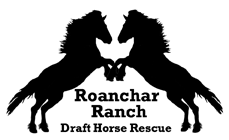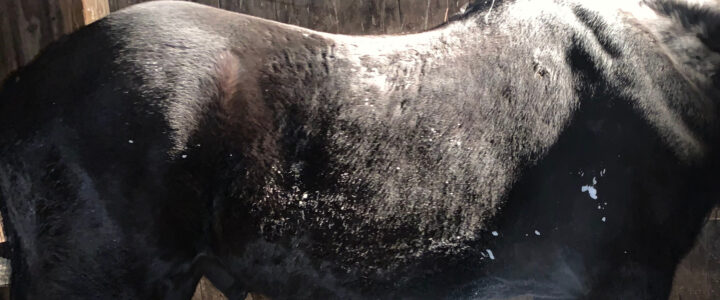When or if to blanket
One of the biggest debates among horse owners revolves around blanketing. Some say that blankets need to be used if the temperature dips below 30 degrees. Others say that a horse can handle most temperatures as long as they are not wet, have shelter, and have plenty of hay.
The truth is that both opinions are correct depending on the horse.
A horse’s natural warming system; their coat
A horse’s coat is comprised of two types of hair: longer stiffer guard hairs; and a soft, fluffy undercoat. The guard hairs “guard” or protect the soft hairs from dirt and water, shed off rain, and collect moisture from sweat that might damage the undercoat. The softer, fluffier hairs of the undercoat trap warm air between and act like insulation around the horse. Natural oils are produced that coat the hair to make them water-resistant. Each hair is connected to the piloerector muscle. This muscle allows the hairs to be stood up or laid flat. When they stand up, warm air is trapped between them, just above the surface of the skin. When they lie down, warm air is released from between them, cooling the area above the surface of the skin.
Body condition plays a role
A horse’s body knows when winter is coming and will start to put on a layer of fat in late summer and early fall in preparation. During cold weather, the fermentation of hay as a horse digests produces an incredible amount of heat. Basically, a horse has a built-in furnace that is fueled by hay. Keep the furnace running and a horse will continue to stay warm.
Just like in a house, though, not all horse furnaces are efficient. Some run better than others. For those horses that are hard keepers and lose weight in the winter, they may need the help of a blanket to keep them warm and maintain their weight.
Boiling down when to blanket
When doesn’t a horse need to be blanketed?
- When he has a natural winter coat
- When he is healthy and in good body weight
- When it is not too windy or raining
- If the temperature says above 5° F
When does a horse need to be blanketed?
- When he has been clipped for winter
- When he is sick or injured
- When he is underweight (or any “hard keeper”)
- When he is older, with weight issues, or difficulty moving around
- When he has been recently moved to a colder climate (Expect it to take 10-21 days for a horse to acclimate to a new climate)
- When it is Windy or Rainy or both
- When there is no available shelter
Don’t miss out on the latest news from the ranch! Sign up for our monthly newsletter today.


